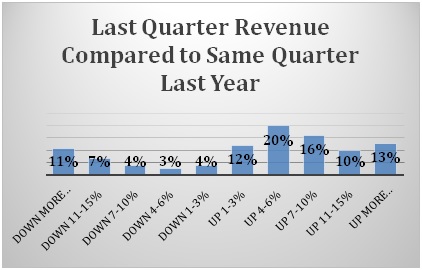Electrical Wholesaler Study 2016 Part 3: How to Operate in the Higher End of the Market

By Claudia Bünte, Sascha Stürze and Oliver Vogler (shown in photo)
Technological change has often been the cause for major market disruption. Consumers tend to benefit from these kinds of disruptions through improved service levels or radically lower prices. Wholesalers and distributors, however, have fewer means to drive changes themselves.
Part 1 in this 3-part series looked at the key challenge of electrical wholesaling challenge. Part 2 explored three major disruptive technology trends affecting the lighting industry: LEDification, connected-home-technology, and purchasing channel-digitalization.
Here in Part 3: successfully operating in added-value market segments. This requires applying a number of different levers, usually at each step of their sales channels:
- Know your customer — really well
- Fix the basics — the right price structures
- Define your value proposition
- Go beyond the product
These factors were chosen based on our interviews with wholesalers, industry experts, and the results of the installer surveys. All four levers are relevant for both, wholesalers and manufacturers in the end.
Leading companies apply all four levers together. First, the company has to understand their customers and needs to decide which customers it wants to focus on and gain in-depth understanding of these target groups. Second, a company has to fix the basics in terms of price structures. This will provide a stable revenue stream and enable it to adjust to disruptive trends. The value proposition then has to be adapted or aligned accordingly while the company must offer a 360-degree customer experience that goes beyond the product itself.
Know your customer — really well
B2C and B2B businesses have to know what their customers really want to establish strong relationships, strengthen customer loyalty, and secure higher margins. This can be trickier than it seems as most companies serve a range of different and in many cases extremely diverse customer groups, depending on the size of the wholesaler. These can include residential and non-residential contractors, large installers, industrial and maintenance customers as well as other manufacturers, electrical specialists and small installers. Although the needs of these customer groups may vary drastically, best practice examples show that companies can successfully address customer needs if they go about it in the right way.
Identifying core customer groups
If a company has too many target customer groups, it can choose to focus on a core stakeholder and tailor an excellent service offering specifically for this group. This is particularly relevant for smaller companies.
There are several ways a company can analyze its customer base to select the “right” stakeholder. In our experience, these are the three most effective analyses:
- ABC analysis based on revenue
- ABC analysis based on profit
- ABC analysis with forward-looking strategic options
Smaller wholesalers may find it more effective to base judgements on future potential in specific business segments on the opinions of in-house experts such as sales teams or the general manager. Larger companies can use data analytics for these analyses (or both).
Regardless of which of the three methods are used, the customers who yield highest revenue/ profit/potential are given an “A” rating, enabling the company to focus more of its resources and labour on these clients. B and C customers warrant progressively less attention and are afforded the corresponding levels of service. The key here is to really focus operations on the selected customer group.
Identifying the most relevant customers is only the start. Once a company has chosen which customers to focus on, it then has to find out what these customers need.
Checklist questions: identifying customer segments
- Do I know who my customers are (based on revenue and profit)?
- Have I carried out an ABC analysis? Is a specific professional group overrepresented?
- Did I “dig deep enough” to develop further business potential in my customer base?
- Do my sales force and service team know about our strategy to focus on the “right” customer group?
- Do I have a key performance indicator (KPI) system in place for these colleagues to create incentives for focusing on the “right” customer group?
Conclusion
Our primary research shows that price is not the only major challenge for wholesalers. Adding real customer value through product and service innovations, adopting a customer-centric perspective and managing the transition to digital business are also key concerns.
All these challenges are based on disruptive technological shifts that are affecting the market by changing the way customers and installers behave. Installers want more training, better service and 24/7 support from their partners. However, this will increase cost structures for these partners. These challenges are the same for wholesalers and manufacturers alike.
Effectively, there are two main strategies that companies can use to overcome disruption and thrive. They can either choose to focus on the cost-sensitive, lower end of the market or compete in the higher end, added-value segment.
In light of strong competition (and expertise) from Asia in the cost-sensitive segment, and with installers looking for more service from wholesalers, we believe that the only viable path for companies based in Europe and North and South America is to focus on the higher end of the market. In other words, to go beyond price and play a strong brand game.
Establishing an own wholesaler brand, and not just relying on the manufacturer brands on the shelf, is vital in order to stay competitive. Otherwise, the threat of being shortcut by manufacturers or new e-distributors exists.
Following discussions, workshops and interviews with wholesalers and backed by many years of experience in the B2B and B2C sectors, we defined four core (brand) levers that wholesalers in B2B scenarios need to operate to succeed. These four levers work in unison and have a direct impact on sales and margins:
- Know your customer (and customer segments) — really well
- Fix the basics — the right price structures
- Define your value proposition
- Go beyond the product
Four dedicated case studies show how these levers can be operated successfully also in the B2B context. In using these levers well, electrical wholesalers actually create a strong brand – opening the way for higher price premiums, greater customer loyalty and higher stock prices. They also allow companies to motivate more and better candidates to apply for jobs and retain the best talent.
Finally, even though international wholesalers, buying groups and local independents are very diverse, the above factors seem relevant for all of them while looking to create a winning model for the future.
Read Part 1: the key challenge facing electrical wholesalers
Read Part 2: how three major disruptive technology trends are affecting the lighting industry.
About the authors
Dr. Claudia Bünte is an international marketing and branding expert. She has held a number of leading positions at global companies across the world: Associate Principal at McKinsey & Company, Global Vice President Brand and Marketing Strategy at Volkswagen AG, Director Europe for Knowledge & Insights, Director Strategy and Planning for Germany and three other markets (both at The Coca- Cola Company). Other engagements include strong brands such as Nivea, Apple and Siemens. She teaches marketing at international institutions and holds a PhD in brand strategy.
Sascha Stürze is the founder and CEO of Analyx. He has dealt with the pragmatic application of advanced data analytics to top management issues in sales and marketing for more than fifteen years. Initially working as a consultant at McKinsey & Company in Berlin and San Francisco and then since 2006 at his own marketing analytics firm, he supports clients across Europe by bringing the power of big data to the desks of CMOs. He holds a Master’s Degree in management information systems and serves on the advisory board of multiple analytics start-ups that he has co-founded.
Dr. Oliver Vogler is Global Vice President for Strategy and Marketing at LEDVANCE. He has worked in the lighting industry for more than five years in different strategy, sales and marketing functions with a strong focus on the electrical wholesale business. Dr. Vogler previously worked for McKinsey & Company as a consultant serving high-tech clients primarily in the lighting and semiconductor industries. He holds a PhD in Empirical Economics.
This white paper has been lightly edited and abridged.











